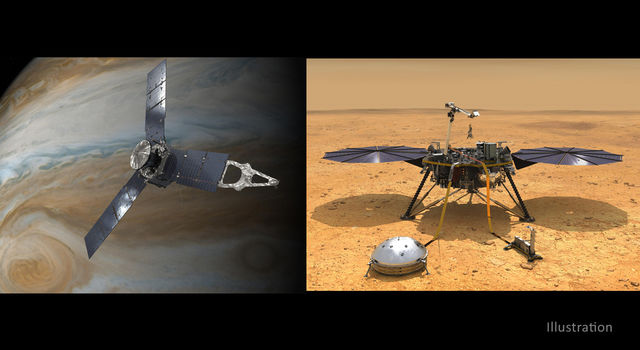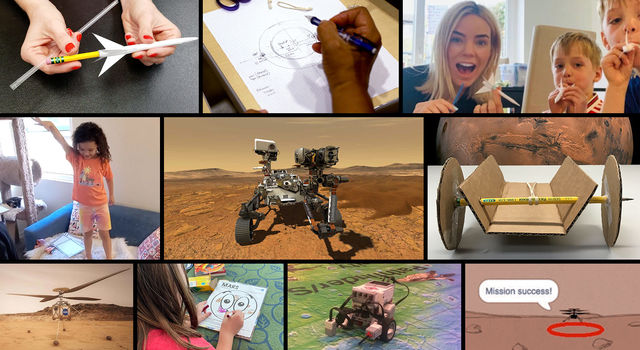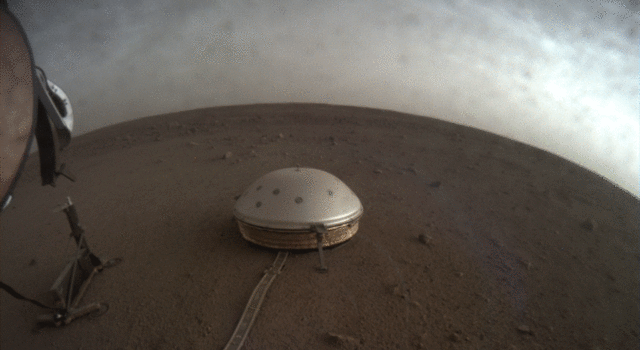Blogs | Dawn Journal | October 30, 2008
October 2008
Dear Presidawntial Candidawnts,
The Dawn spacecraft continues on course and on schedule for its bold campaign to unexplored worlds. The probe is thrusting gently with its ion propulsion system, as it has been for most of its time in space, gradually modifying its path around the Sun.
New research in the well-named Department of Recent Earthling Communications and Knowledge at the increasingly popular Galactic University of Fatuity and Frivolity (GUFF) has revealed that the significant majority of these logs written since Dawn’s interplanetary cruise phase commenced on December 17, 2007, have begun with something similar to that introductory paragraph. That may not be very surprising, as humankind would not be able to accomplish this ambitious and exciting mission without a reliable, ion-propelled spacecraft. (Note to other readers: for bureaucratic reasons, earthlings have chosen not to collaborate with more technologically advanced species on this mission. Rest assured, though, that it’s nothing personal!) Nevertheless, as you will see in a second (assuming you can read about 800 words per second), this familiar story will change quite soon, as the typical content of our opening remarks will no longer be fully applicable. First, let’s review what Dawn has accomplished since the last log besides 28 days of thrusting.
On September 29, as its own silent but joyous celebration of its first anniversary of being in space was winding down, the spacecraft stopped thrusting so mission controllers could conduct routine maintenance on components in 2 of its subsystems: attitude control and ion propulsion. (Thrusting is suspended during these activities principally because the orientation in which the main antenna is aimed at Earth is different from the orientation required to point an ion thruster in the direction needed for changing the craft’s course through space.) Attitude control is responsible for the orientation (known to engineers as “attitude”) of the probe in the zero-gravity of spaceflight. Despite its name, this subsystem is as pleasant a member of the onboard crew as any other. Ion propulsion, of course, reshapes the spacecraft’s orbit so it will rendezvous with distant Vesta and Ceres and maneuver at each to obtain the precious scientific secrets they hold.
Some of the work during this week was to verify that the contents of the computer memory in certain components remained intact. On September 30, engineers confirmed that the memory in each of the 2 ion propulsion computer control units was in good condition. On October 2, the backup star tracker was tested, and it also remains healthy and ready for use whenever needed. A star tracker helps the attitude control system determine the orientation of the spacecraft by imaging groups of stars and recognizing patterns, much as you might orient yourself on a dark, cloudless night if you were familiar with the constellations. (Readers who travel frequently, and hence must keep track of where they are in their galaxy in order to know what the arrangement of stars should be, have a more difficult problem than Dawn’s star trackers face. The solar system is so tiny compared to interstellar distances that the views of the stars remain essentially unaffected by where the spacecraft is, just as the shapes of constellations are the same for observers anywhere on Earth.)
In addition to performing maintenance on software, the mission control team needs to keep Dawn’s hardware in peak condition. The 3 ion thrusters are mounted on separate mechanical apparatuses that allow each 8.9-kilogram (19.5-pound) thruster to be pointed accurately. These thruster gimbal assemblies, known as TGAs to team members who find themselves too busy to use entire words (such people are themselves known as being TBTUEW), need to have lubricant in their bearings redistributed occasionally. Even when a TGA is in use for an operating thruster (thruster #1 has been the active one since June), the usual motion is not enough to accomplish the needed spreading of lubricant. Therefore, all 3 TGAs were moved through a prescribed pattern, ensuring that they will be able to continue to operate smoothly and point correctly.
Dawn is outfitted with 4 reaction wheels, devices whose spin is controlled electrically. Changing a wheel’s spin rate allows the attitude control system to rotate the spacecraft. The wheels are mounted in different orientations, but any 3 are sufficient for normal operations. Wheel #3 has been off since May. On October 2, it was powered on again and wheel #2 was deactivated, beginning its turn as the backup.
Gyroscopes, which will help attitude control perform the accurate pointing of science instruments at the 2 protoplanetary destinations, normally are turned off, as they are not needed for most of Dawn’s assignments along the way. A few times each year they do need to be operated to ensure they remain in good condition. The last such time was in May. On September 29, the units were activated again, and they remained powered on until October 3.
With all maintenance completed successfully, normal interplanetary thrusting resumed on October 3. Soon however, interplanetary thrusting will no longer be the norm. Some of the unusual principles of an interplanetary journey driven with ion propulsion were considered in a log written while Dawn was still gravitationally anchored to Earth. One essential characteristic of such missions is the long periods of thrusting, familiar now to those fortunate enough to have followed Dawn’s progress since the beginning of the interplanetary cruise phase. But, thrusting is not required for the entire voyage; indeed, at some times thrusting is helpful to the mission and at other times it would be detrimental. Extensive analysis is devoted to computing the thrusting schedule, based on factors ranging from the physical characteristics of the solar system (e.g., the masses and orbits of Earth, Mars, Vesta, Ceres, and myriad other bodies) to the capabilities of the spacecraft (e.g., electrical power available to the ion thrusters) to constraints on when thrusting is not permitted (e.g., during spacecraft maintenance periods).
As hinted obscurely only a second ago, the period in which thrusting is beneficial for reaching Vesta on schedule is drawing to a temporary close. For nearly all of the next 7 months, Dawn will coast in its orbit around the Sun (just as do most objects in the solar system, including other spacecraft and planets), no longer mounted atop a bluish-green pillar of xenon ions. Still, its orbit will change dramatically during this interval, as its flight by Mars in February will deflect its path through the solar system. As we shall see in the next log, to achieve exactly the gravitational bending needed, the spacecraft will execute some special thrusting in November and again in January, but very little indeed.
The interplanetary cruise phase has gone so smoothly that the completion of thrusting is being reached somewhat sooner than had been expected earlier in the mission. Commands already stored in Dawn’s central computer will terminate the thrust on October 31 at 3:22 pm PDT. In the next log, we will discuss a bit about the process the team used to determine that time, as it bears on another activity planned for November; contrary to what you might conclude however, leaving enough time for team members to don their costumes in preparation for going door to door to collect Halloween treats was not a factor. (Your correspondent, who disguises himself in costumes at JPL most days, won’t need any extra time at all tomorrow to outfit himself for perfectly frightening appearances on Halloween.)
Although thrusting will be uncommon over the coming months, there will be plenty of other news to look forward to in these logs, including the reversal of Dawn’s departure from Earth, the first attempt to measure the total power generating capability of the solar arrays, passage of the spacecraft nearly behind the Sun, plans for and results of the brief visit to Mars, a dramatic increase in the quality of writing [Note from writer to sponsor: Now that I’ve made such a promise to our readers, I hope you’ll come through with that generous raise I’ve been requesting. Note from sponsor to writer: OK, you win. We agree to a 2% raise from the current $0.00 per log, and we will pay 1% of your tuition if you can buckle down, gain readmission to GUFF, and finally receive your degree.], and much more.
Dawn is 384 million kilometers (238 million miles) from Earth, or 950 times as far as the moon and 2.58 times as far as the Sun. Radio signals, traveling at the universal limit of the speed of light, take 43 minutes to make the round trip.
Dr. Marc D. Rayman
9:00 pm PDT October 30, 2008
TAGS:DAWN, VESTA, CERES, DWARF PLANET, MISSION, SPACECRAFT







